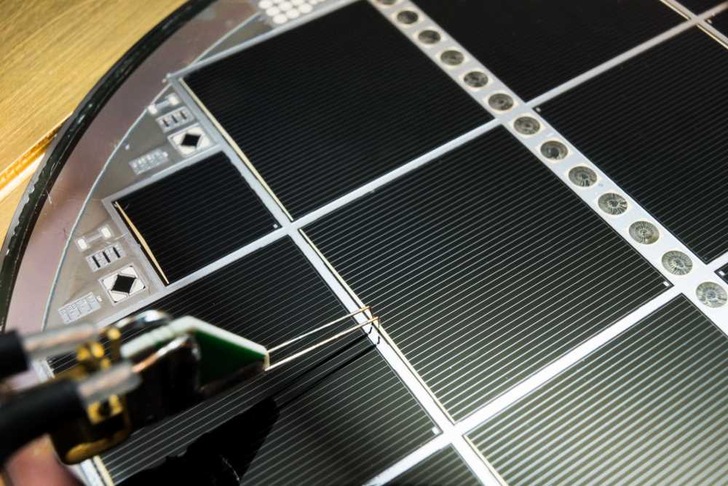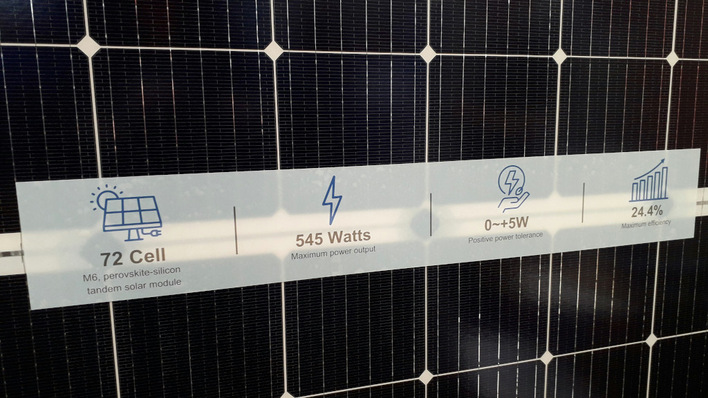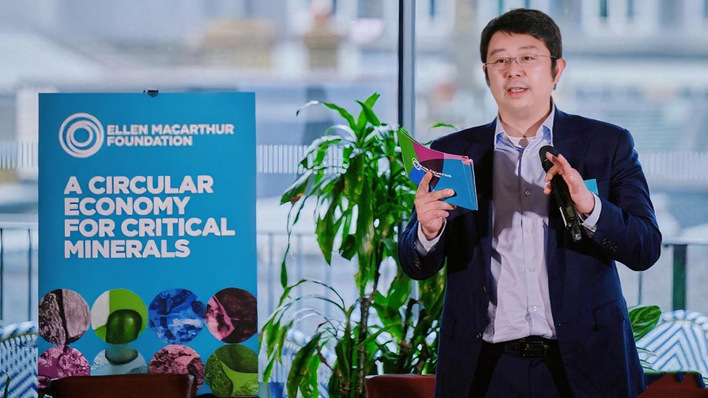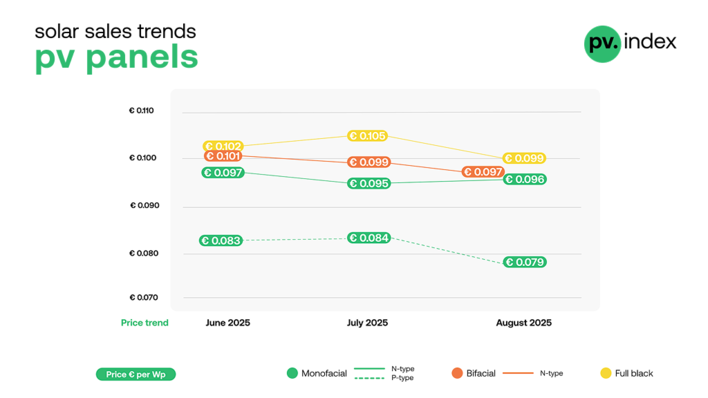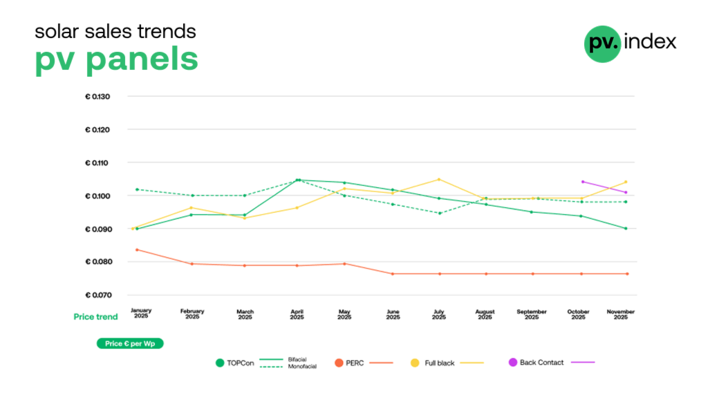Although photovoltaics is considered a comparatively clean and climate-friendly technology, it does not have a completely clean slate either. Even though PV modules convert light into energy without producing any emissions, CO2 emissions and other environmental impacts are generated during the production, operation and ultimately also the recycling of photovoltaic systems. There are a number of ways to optimize this.
The Fraunhofer Institute for Solar Energy Systems (Fraunhofer ISE) and the German Federal Environment Agency (UBA) recently presented updated studies on this subject, which also highlight optimization options. Different PV module technologies, materials and components used, the manufacturing location or the solar power yield during use were considered.
Global warming potential of fossil power much higher
According to UBA, a PV system with monocrystalline modules at a location in Germany has a global warming potential of 43 to 63 g CO2 equivalents/kWh. The value for a system with multicrystalline modules is 36 to 47 g. Thin-film modules (CIGS, CdTe) achieved even lower values of 24 g CO2/kWh and 17-20 g CO2/kWh, respectively. The values for conventional fossil power generation types are many times higher: Natural gas comes to 490 CO2 equivalents/kWh, according to UBA, and lignite-fired power generation to around 1,140 g.
The UBA based its calculation of greenhouse gas emissions for PV systems on a useful life of 30 years and an average performance ratio, including degradation losses, of 0.75 for roof systems and 0.8 for ground-mounted systems with an optimal solar orientation. The average annual solar radiation for locations in Germany was assumed to be 1,200 kWh/m2.
The efficiency of current commercial PV modules was also included in the calculations: 18 percent for monocrystalline, 16.8 percent for multicrystalline, 17 percent for cadmium telluride and 14.6 percent for CIGS modules. The UBA study also considered the environmental impact of the life cycle of the required system components such as inverters, substructures and electrical cables.
Longest possible system utilization crucial factor
The energy consumption and electricity origin during module and component production and the service life of the plants are decisive variables in the UBA calculations. If the system supplies less electricity due to a shorter service life, the greenhouse potentials can increase significantly. The longest possible system utilization therefore has a particularly positive effect on the life cycle assessment of solar power generation. According to the UBA, the energy payback times at a German plant location are between 0.9 and 2.1 years, with thin-film modules again leading the way (mono C-Si, 2.1 years; multi c-Si, 1.7 years; CIGS, 1.3 years; CdTe, 0.9 years).
The CO2 footprint of six monocrystalline silicon photovoltaic modules was calculated by Fraunhofer ISE in a study in September 2021. Modules with manufacturing locations in China, Germany and the European Union, and one each with glass-foil and glass-glass laminate were investigated. The result: The modules manufactured in the EU produce 40 percent less CO2 than those "made in China." This is mainly due to the energy mix of the respective countries (high proportion of coal-fired electricity in China) and less to the emissions generated during transport.
Made in Europe and glass-glass modules in front
"With 50 to 63 percent, the share of energy required in manufacturing is the most influential factor on the CO2 footprint of a solar module," says Holger Neuhaus, department head for module technology at Fraunhofer ISE. For a PV module from China, CO2 emissions generated during transport to the EU accounted for about 3 percent of total emissions. In addition, frameless glass-glass modules cause 7.5 to 12.5 percent less CO2 during production than glass-foil modules.
Did you miss that? Return of „made in Europe“
The study shows this for all modules examined, regardless of where they are manufactured. The reason for this is not the back foil itself, but the fact that glass-glass modules do not require an aluminum frame, the production of which is very energy-intensive. Modules with glass on the front and back also have a longer lifetime and lower annual degradation than those with film, which further improves their carbon footprint.
In terms of kilowatt hours generated, the frameless glass-glass module produces 22 to 27 percent less CO2 emissions than the glass-foil modules. Overall, the study arrives at CO2 emissions for glass-foil modules and for glass-glass modules of 810 and 750 in China, 580 and 520 in Germany, and 480 and 420 kilograms of CO2 equivalent per kilowatt peak in the EU. The study is based on new production data collected at Fraunhofer ISE in collaboration with industry.
CO2 footprint of PV modules has improved by 80 %
"Compared to life cycle analyses based on older data sets, it showed that the CO2 footprint of PV modules has improved by about 80 % in recent years. Improvements in silicon yield, module efficiency manufacturing processes and power generation CO2 intensity are responsible for this," Neuhaus says.
But there are a number of other optimization opportunities and challenges for further improving sustainability in the manufacturing and design (as well as recycling) of PV modules. For example, Fraunhofer-ISE points out that modules based on silicon wafers often still contain lead in the cell metallization (about 2 g of lead per 60-cell module) and in the solders used (about 10 g of lead). However, lead in wafer-based modules can be completely replaced by harmless materials at little additional cost, according to Harry Wirth. Division Manager Photovoltaic Modules and Power Plants.
Also interesting: Technological learning key for resource efficient terawatt scale PV
Another way to reduce lead consumption is to minimize or replace silver in cell production. The PV industry consumes around 1,500 t of silver annually worldwide, which corresponds to just under 6% of the production volume in 2020. According to Wirth, the silver on the solar cell can largely be substituted by copper, and quite a few manufacturers are already doing this.
Solar glass without antimony
There is also still room for improvement in terms of sustainability when it comes to high-quality solar glass for the front panels of the modules, which has very low absorption in the relevant spectral range between 380 - 1100 mn. This is because some glass manufacturers purify the molten glass and increase the light transmission by adding antimony (Sb). When this glass is disposed of in landfills, antimony can enter the groundwater. Alternative refining processes without antimony addition are available, according to Fraunhofer ISE. (hcn)


